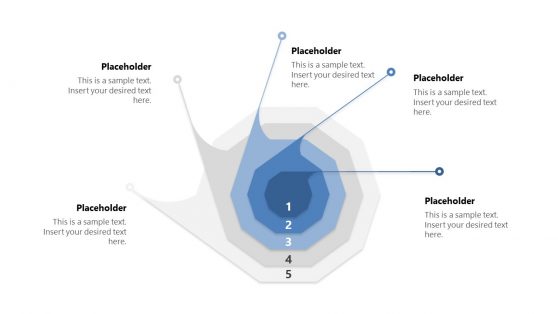Ripple Effect PowerPoint Templates
Download and use any of our Ripple Effect PowerPoint Slides to help you demonstrate the association of different aspects of your project and consider all possible consequences. Presenters can edit these Ripple Effect PowerPoint Slides by changing shapes, icons, color scheme, diagrams, charts and more. Images and text are easy to place thanks to editable placeholder areas.
All these templates are compatible with both Mac and Windows computers. They work with all PowerPoint versions, Google Slides and Keynote.
The Ripple Effect Template is a graphical metaphor of a business presentation tool that explains the indirect or unintended consequences driven out of any action, decision, or event within the company/organization or its proximal business environment. In short terms, it exposes how one action can trigger a chain reaction (i.e., when you have a line of domino pieces and you push one of them, the others fall down in motion).
The Ripple Effect is used in multiple ways in the business environment, such as:
- Exam economic impact: On niche markets, and even up to the governmental level, some companies produce a significant impact beyond their action zone. Say, a company on the same tier as Google lays off half of its workforce. The impact of that decision won’t only affect the organization but also local markets, communities, suppliers, etc.
- Supply chain distribution: Commonly seen as bottlenecks in production, the disruption of one stage significantly affects the entire production process due to the ripple effect. This can impact either the organization or end-consumers.
- Innovation: We’ve all seen the hype caused by adopting AI technologies in recent months. This innovation in the technological panorama affected multiple industries, which now have to adapt their business models to jump into the AI wagon.
A Ripple Effect Template can help organizations to explore the intricate connections and causal relationships between a different project, decision, or strategy elements. It is an ideal slide for business, management, economics, and social sciences professionals who need to visualize complex systems and demonstrate the potential impact of different actions.
Typically, these slides features a central node, which represents the initial action or decision, and several branches that extend outwards to represent the various effects that result from it. You can edit each branch to reflect the magnitude and nature of the effect and add nodes to elaborate further on the connections between different elements.
What is a Ripple Effect?
A Ripple Effect refers to the impact or consequences of a single action or decision. It is the idea that a small initial action can have a far-reaching and amplifying impact on a larger system or environment. The concept is often used in business, economics, and social sciences to understand the complex interconnectedness of different elements and how they affect one another.
How do you create a Ripple Effect in PowerPoint?
You can use the SmartArt feature to create a Ripple Effect in PowerPoint, specifically the “Hierarchy” layout. Start by inserting a SmartArt graphic and selecting the Hierarchy layout.
Then, customize the layout by removing the default shapes and adding your shapes to represent the various elements of your system. Use lines or arrows to connect the shapes and indicate their causal relationships. Finally, add effects such as shadows, 3D rotation, or animations to make the Ripple Effect slide more visually engaging and dynamic.
How do you make a Floating Effect in PowerPoint?
Use the animation features to create a floating effect in PowerPoint. Start by selecting the object or text box you want to float, then click the “Animations” tab. Pick the animation you want to use, such as “Float In” or “Float Out.” Proceed to customize the animation by adjusting the duration, direction, and other effects.
Presenters can also add sound effects or trigger the animation to start on a specific event, such as clicking a button or advancing to the next slide.
What is the best way to use the Ripple Effect Slide in a presentation?
Focus on a specific decision or action, then consider its potential impact on individual parts or a system as a whole. Using these ripple effect slides will help to demonstrate the correlation between different aspects of a project or strategy and highlight the importance of considering all possible outcomes before deciding.
Can the Ripple Effect Slide be customized?
Yes, you can customize these Ripple Effect Slides to suit your specific needs and preferences. For starters, you can change the nodes and branches’ color, size, and shape to reflect the effect’s magnitude and nature. Increment the node and branch count if you intend to represent complex concepts, or adapt the branches count to portray the relationship between different actors.



